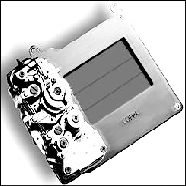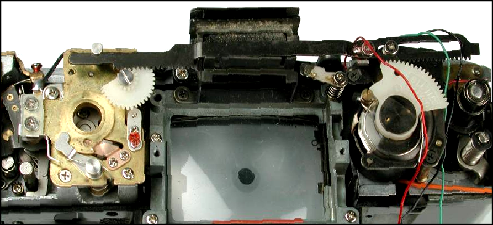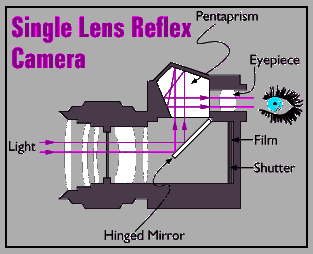

29th May 2008

Help with your project topics – IF IN DOUBT ASK !
The iris diaphragm is made up of a series of blades that sweep together as they rotate to make a smaller central hole.
This controls the amount of light reaching the film
(or CCD array) in a similar way that increasing or
decreasing the size of a pipe allows more or less
water to flow into a tank.
This controls the amount of light reaching the film
(or CCD array) in a similar way that increasing or
decreasing the size of a pipe allows more or less
water to flow into a tank.


Whilst the two components that control the amount of light entering the lens seem simple enough - there are a number of other systems that need to be included to give a camera packed with the features that allow easy picture taking. Gears made of nylon or metal change the sweep of the winding-on lever to a rotational from one spool in the camera

Iris diaphragm
- controlling the size of the hole behind the lens
-



Shutter mechanism that operates by allowing a series of metals slats to open for a fixed amount of time selected from a control on the top of the camera

to another. Of course this must also link with another mechanical system that trips a small counter round each time the shutter is released and the film wound on again. Without this the user wouldn’t be too sure of how many photographs could still be taken on the film. Try picking up a camera and checking all of its features out. Make a list of all the ‘systems’ that are required to allow you to take a picture. Throughout the 1940s, 50s, 60s and 70s the systems were predominantly mechanical and required the expertise of a jeweller-type of craftsman to assemble and repair the units when things went wrong. One further system that was necessary in one particular type of camera - the SLR - Single Lens Reflex - was the need to swing the mirror out of the way when the button was first pressed but before the shutter

The SLR was very popular for serious photography because it allowed accurate focusing ‘through the lens’. This was done manually by rotating the lens until a sharp image was seen reflected in the main mirror and then reflected again in the prism - on top
of the camera ( two reflections meant the image was now the right way round again.) Around the mid 1980’s ( see the Polaroid SX90) an ‘autofocus’ system was introduced into camera designs - yet another sub-system - but this now had become an electronic circuit with ‘feedback’ - keeping the sensor working until the conditions that were being used to measure a ‘sharp’ (focused) image were met. One type of system is an
of the camera ( two reflections meant the image was now the right way round again.) Around the mid 1980’s ( see the Polaroid SX90) an ‘autofocus’ system was introduced into camera designs -
‘active’ autofocus - emitting an Infra red beam and measuring its return - whilst the other is the ‘passive’ autofocus that adjusts the image for maximum contrast at the edges of a subject. Both of these require a feedback circuit to drive or stop the motor that is attached to the lens and which changes the focus.
# 2 of 12 pages
